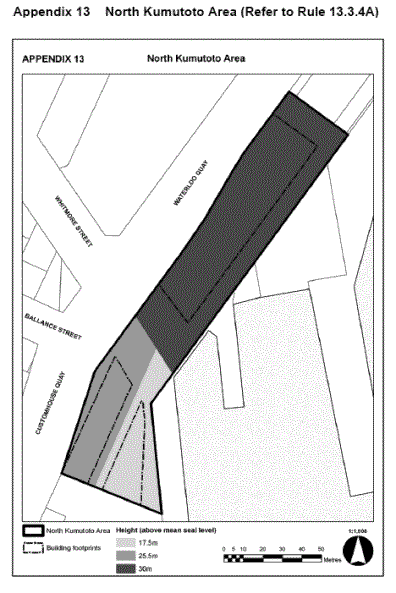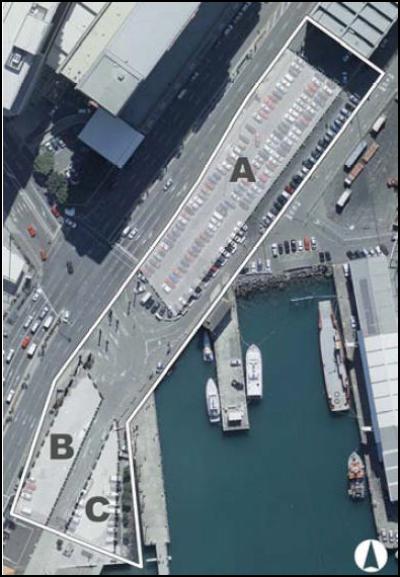Wellington City Council approves plan to stop the public opposing new waterfront buildings
by Lindsay Shelton
Less than a week after releasing 79 pages of documents about proposed variations to the District Plan, the Wellington City Council has approved the changes.
The council’s intention is clear. It wants to reduce the public’s right to challenge new buildings being planned for publicly-owned land on the city’s waterfront.
The proposals were debated and approved at a meeting on Thursday (December 4) with opposition from only three councillors (Iona Pannett, Bryan Pepperell, Helene Ritchie).
The decision to curb public involvement seems to have been given impetus by the council’s defeat this year in the Environment Court, which stopped its plan – approved by council officers - to allow a Hilton Hotel to be built on the Outer T of Queens Wharf.
This was the second time that a council-approved plan had been defeated in the Environment Court. In 2001, the Ambulance Building was to be shifted on to the water’s edge at Taranaki Wharf so that it could be replaced by a newer, bigger building – as a result of an appeal to the Environment Court, this plan was cancelled.

And now there’s to be a third appeal in the Environment Court – arising from public opposition to council-approved plans for substantial redevelopment of the Overseas Passenger Terminal.
Such a process would be stopped by the proposed variations to the District Plan. The council doesn’t want the public to see specific building plans or to challenge them. Approvals would be made behind closed doors.
The immediate effect would be to allow council officers to approve three new buildings in the northern Kumutoto area of the waterfront, without notifying the public of the individual plans and thereby removing any right to object.
These new powers would stop the possibility of appeals to the Environment Court against any specific buildings, such as the appeal which stopped the Hilton.
The changes – by which the council would authorize itself to give the go-ahead to new buildings without public notification - have been named Variation 11. The detail is spread across four documents: Part 1, Part 2, Part 3. Part 4
Page 10 of the 34-page Appendix 1 (which is part of the proposal for change) provides a map showing where the council proposes to allow the three new buildings in the Kumutoto area.
Page 12 of the Appendix provides an aerial view of the footprints of the three new buildings.
Site A, the biggest site, will allow a building which is six-storeys high, replacing open space with a new urban canyon opposite the Post Office Building and radically shrinking the harbour views for tourists staying in the most expensive rooms in the new Holiday Inn.

The current vistas at the Whitmore Street gates would be replaced by “space framed by buildings on either side.” The preference of the council’s planners: that “buildings … should frame the views.”
The proposed changes would not completely remove the public’s ability to oppose the council’s enthusiasm for big new buildings on the edge of the harbour.
Public input will be allowed “at the initial plan variation stage.” But when specific building plans are developed, the public will not be told about them.
After the initial planning period, in the council’s words, “there may not be the opportunity for further challenge and possible appeals when subsequent resource consent hearings are made.”
For the council, this will “greatly simplify the process.”
For the citizens of Wellington, the long-held ability to challenge specific new buildings on the waterfront will have been ended.
A design guide for the Kumutoto area is proposed, with public input permitted. But the design guide will give developers “an infinite range of design solutions” for new buildings. And the public won’t be allowed to know about them.
The council doesn’t deny that there has been strong concern in the past about new buildings on the waterfront. Attachment 1 of its proposal bravely acknowledges two major examples (in 1989 and 1998) of public opposition which was so strong that planning regimes were replaced. But it now appears to have invented a strategy which would ensure that any future opposition wouldn’t be given a chance, because new building plans could be approved without any public knowledge or input.
What happens next?
Now that a majority of councillors have approved the new plans, there will be a two-month period of public consultation starting in February.
If the consultation process fails to achieve any change, then specific plans for the three new buildings at Kumutoto can be approved without public scrutiny. The initial generalized planning process will have been the only chance for the public to be heard.
What’s in store for the rest of the waterfront?
It seems to be inevitable that the council will want to extend its public-excluded policy to Waitangi Park, where most people have forgotten that the council has kept four sites which it specifies are for big new buildings.
5 December, 2008
See also, from the Wellington City Council: Response from Mayor to Lindsay Shelton's column




 Keith Rankin: Invoking Munich, 'Appeasement', And The 'Lessons Of History'
Keith Rankin: Invoking Munich, 'Appeasement', And The 'Lessons Of History' Peter Dunne: Dunne's Weekly - School Lunches Fiasco Shows What Happens When Social Policy Loses Focus
Peter Dunne: Dunne's Weekly - School Lunches Fiasco Shows What Happens When Social Policy Loses Focus Gordon Campbell: On The Government’s Stubborn Refusal To Invest For Growth
Gordon Campbell: On The Government’s Stubborn Refusal To Invest For Growth Binoy Kampmark: Aggrieved Speculation - The Trump Illness Hypothesis
Binoy Kampmark: Aggrieved Speculation - The Trump Illness Hypothesis Keith Rankin: Dodgy Democracy, The Fiscal Double Standard, And The Application Of The Domino Theory To Ukraine
Keith Rankin: Dodgy Democracy, The Fiscal Double Standard, And The Application Of The Domino Theory To Ukraine Gordon Campbell: On Why GP Practices Are In Crisis
Gordon Campbell: On Why GP Practices Are In Crisis